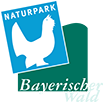Summit meeting of survivor artists
True specialists
Among the bird diversity of the Arber live a number of true survival artists able to cope with the harsh conditions on the summit. Above the tree line, rare breeding birds such as the alpine accentor, mountain pipit, and dotterel also use the summit plateau as a migratory resting place. The fact that the ring ouzel breeds among the expanse of mountain pines is also noteworthy, as its main Bavarian distribution area is actually in the Alps.
Forest diversity zones
The Arber is the only peak in the Bavarian Forest to reach the climatic tree line. Today’s tree line is not a result of altitude and climate, but largely a consequence of human influences through clearance of land for use as pastures. Only the rocky ridges and highest boulder fields were and are naturally free of trees.
Aufichtenwald (a type of spruce forest)
In hollows and depressions where cold air tumbling down from the ridges accumulates, frost and moisture have an impact on the vegetation. As a result, the boggy forest floors mainly support slow-growing spruce, which are susceptible to storms due to their shallow root plates.
Mixed mountain forest
Between 600 m and 1,200 metres above sea level, altitude governs the mixed mountain forest which colonises the south-facing slopes of mainly deep soils. The main tree species are spruce, fir and beech, but sycamore and elm are also occasionally found.
Mountain spruce forest
Mountain spruce forests can be found on the Arber at an altitude of approximately 1,200 to 1,400 metres above sea level. Low temperatures, persistent snow cover and shallow soils means the forests consist almost exclusively of cold-tolerant spruce trees. Spruces are slow growing, have branches which hang down to the ground, thin crowns, and have adapted well to the conditions.
A treeless summit
Above the tree line is an area of mountain pine scrub like nowhere else in the Bavarian Forest. The low-growing, tolerant mountain pines and an occasional rowan withstand the winter storms and deep snows.
Mountain Pipit
The mountain pipit breeds on the ground and is therefore vulnerable to predators and footfall. It lives on the Arber’s summit, a small isolated area outside its normal distribution in the Alps.
Capercaillie
The capercaillie is the largest forest bird in Central Europe. The bird, which is threatened with extinction, can survive at the high altitudes found in the Arber region.
Eurasian lynx
The largest native cat species has once again found a home in the extensive mixed mountain forests of the Arber region.
European otter
The otter found a last refuge in Eastern Bavaria, where it has re-established itself throughout the region’s water courses.
On top of the world!
In good weather and with a clear view, you can even see the Alps in addition to the mountains of the Bohemian Forest and Bavarian Forest. Take away some memories of the fabulous views or think about what impressed you the most, then try to draw it at home. You are welcome to send us your drawings!
